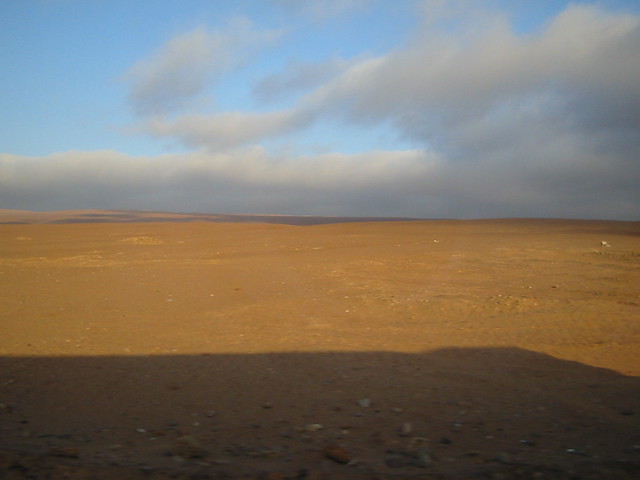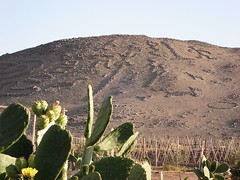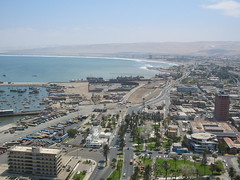From Antofagasta all roads lead into the heart of the Atacama desert, a trip to a mysterious abyss. Crossing the desert by bus, on foot and partly by bicycle, you come into contact with an incredibly dry earth, a lunar landscape wrought by a tropical and breath taking sun. Even here a few brave people still live, especially because the barren land hides an incredible richness of the subsoil. Along the way are oases of dust and 60 years old american cars, mining towns were abandoned to their infamous faith, swallowed by the sand and the passing of time. Pedro de Valdivia, Maria Elena, and then Quillagua.
The red earth hides, together with the minerals, the countless bodies of those who have come here to die by their own choice (open copper mine of Chuquicamata is the largest in the world), and many by constraint (the Pinochet’s regime jailed in these wastelands dissidents for forced labor). A lasting memory of these tragedies are the graves of Pisagua. The memory of these abuses spread the devotion to Saint Lawrence, considered by Chileans as the patron of the miners and celebrated on August 12 of each year. He hid the material goods of the church under the ground to protect them from the voracity of the Emperor Valerian. Similarly, the Chileans are struggling to maintain control over their natural resources (gold, silver, nickel, molybdenum, sulfur, etc..).
Maria Elena is a town hanging in the wind, the presence of ghosts fills the void of a community hidden underground. Everything disappears in the heat of the afternoon, but even in the evening when the heat loosens its grip, the community does not come alive. The resignation of a life of hardship covered with dusty scrub every house, every object. We stop at a playground where the swings have died of rust and neglect, each mechanism creaks, the children have left these amusements even before their birth.





